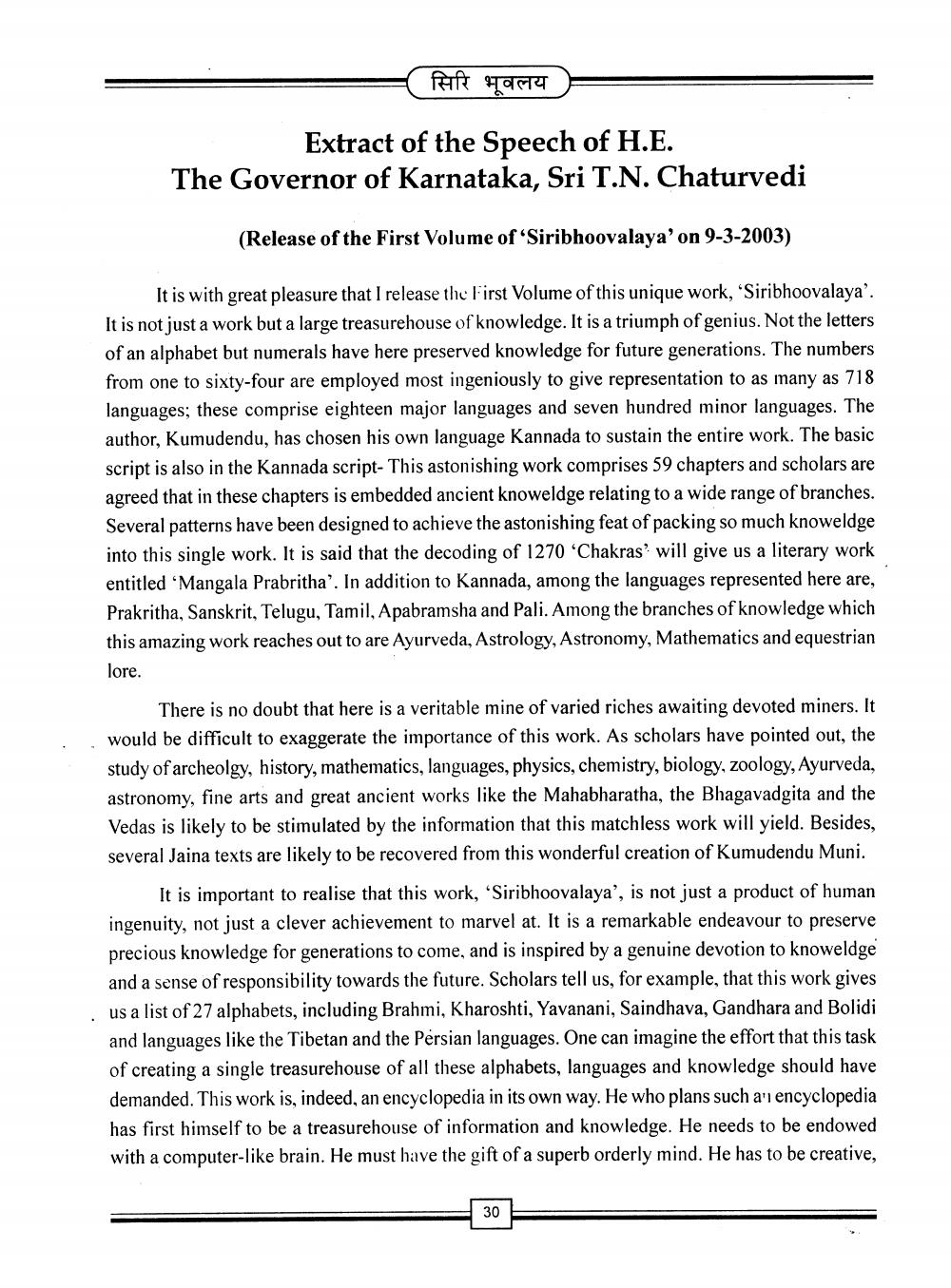________________
सिरि भूवलय
Extract of the Speech of H.E. The Governor of Karnataka, Sri T.N. Chaturvedi
(Release of the First Volume of 'Siribhoovalaya' on 9-3-2003)
It is with great pleasure that I release the First Volume of this unique work, 'Siribhoovalaya". It is not just a work but a large treasurehouse of knowledge. It is a triumph of genius. Not the letters. of an alphabet but numerals have here preserved knowledge for future generations. The numbers from one to sixty-four are employed most ingeniously to give representation to as many as 718 languages; these comprise eighteen major languages and seven hundred minor languages. The author, Kumudendu, has chosen his own language Kannada to sustain the entire work. The basic script is also in the Kannada script- This astonishing work comprises 59 chapters and scholars are agreed that in these chapters is embedded ancient knoweldge relating to a wide range of branches. Several patterns have been designed to achieve the astonishing feat of packing so much knoweldge into this single work. It is said that the decoding of 1270 'Chakras will give us a literary work entitled 'Mangala Prabritha'. In addition to Kannada, among the languages represented here are, Prakritha, Sanskrit, Telugu, Tamil, Apabramsha and Pali. Among the branches of knowledge which this amazing work reaches out to are Ayurveda, Astrology, Astronomy, Mathematics and equestrian lore.
There is no doubt that here is a veritable mine of varied riches awaiting devoted miners. It would be difficult to exaggerate the importance of this work. As scholars have pointed out, the study of archeolgy, history, mathematics, languages, physics, chemistry, biology, zoology, Ayurveda, astronomy, fine arts and great ancient works like the Mahabharatha, the Bhagavadgita and the Vedas is likely to be stimulated by the information that this matchless work will yield. Besides, several Jaina texts are likely to be recovered from this wonderful creation of Kumudendu Muni.
It is important to realise that this work, 'Siribhoovalaya', is not just a product of human ingenuity, not just a clever achievement to marvel at. It is a remarkable endeavour to preserve precious knowledge for generations to come, and is inspired by a genuine devotion to knoweldge and a sense of responsibility towards the future. Scholars tell us, for example, that this work gives us a list of 27 alphabets, including Brahmi, Kharoshti, Yavanani, Saindhava, Gandhara and Bolidi and languages like the Tibetan and the Pérsian languages. One can imagine the effort that this task of creating a single treasurehouse of all these alphabets, languages and knowledge should have demanded. This work is, indeed, an encyclopedia in its own way. He who plans such an encyclopedia has first himself to be a treasurehouse of information and knowledge. He needs to be endowed with a computer-like brain. He must have the gift of a superb orderly mind. He has to be creative,
30




